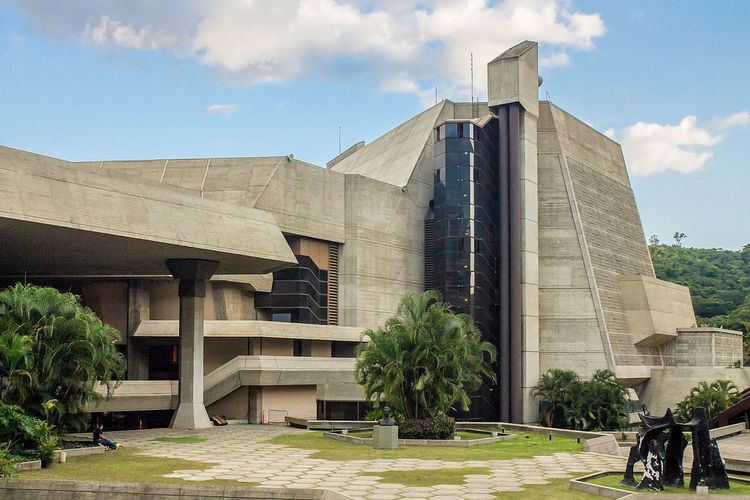Capacity 2,900 Architectural style Brutalist architecture | Opened 19 April 1983 Phone +58 212-5749122 | |
 | ||
Architects Tomás Lugo Marcano, Dietrich Kunckel, Jesús Sandoval Similar Parque Central Complex, Caracas Cathedral, Los Caobos Park, Museo de Bellas Artes, El Ávila National Park Profiles | ||
Teresa carreno orchestra rfh
The Teresa Carreño Cultural Complex (Complejo Cultural Teresa Carreño), also known as Teresa Carreño Theater (Teatro Teresa Carreño), is the most important theatre of Caracas and Venezuela, where performances include symphonic and popular concerts, opera, ballet and plays. It is the second largest theater in South America after the Teatro Colón of Buenos Aires.
Contents
- Teresa carreno orchestra rfh
- Teresa carre o youth orchestra of venezuela
- History
- Performance venues
- Artwork
- Teatro Teresa Carreo Ballet
- References
The theatre was built on a 22,000-square-metre (240,000 sq ft) lot and named after the Venezuelan pianist Teresa Carreño. It is located in the cultural district of the city: Bellas Artes. It houses two concert halls: the José Félix Ribas and the Ríos Reyna (named after Pedro Antonio Ríos Reyna).
The following are resident performing arts groups:
Its spaces are also shared by the National Theater Company of Venezuela and the Monte Ávila Editores bookstore (Librerías del Sur).
The artistic director of the theater is the Venezuelan conductor Rodolfo Saglimbeni.
Teresa carre o youth orchestra of venezuela
History
In the 1970s, Pedro Antonio Ríos Reyna presented a plan to build a theatre to serve as the residence of the Venezuela Symphony Orchestra. The Simón Bolivar Center expanded the project so that the center would serve multiple uses.
The funds for construction were granted in September 1970, and the architects were Tomás Lugo, Jesús Sandoval, and Dietrich Kunckel.
The theatre was inaugurated in two phases: the José Félix Ribas Hall in February 1976, followed by the Ríos Reyna Hall and the rest of the complex on 19 April 1983.
The center facilities have been expanded with two exhibition halls, one dedicated to the pianist Teresa Carreño and another one to the composer Reynaldo Hahn.
Performance venues
The Teresa Carreño Theatre is an architectonical and cultural masterpiece of Venezuela. It covers a surface of 22,586 m² and has a completed area of over 80,000 m².
Enormous columns and hexagonal roofs in a harmonic overlaid position, integrate the majestic expression of joint architecture and pluralist nature, making it a unique theatre.
Artwork
The Theater has extraordinary decoration, with fine pieces of artwork.
Teatro Teresa Carreño Ballet
It is one of the stable organizations (along side the Chorus) created from the start of the theatre in 1979. Its debut was in 1980, and since then it has played several important ballets such as The Nutcracker, Guaraira Repano, Swan Lake, Carmen, and others. It is currently composed of around 30 dancers from all over the country.
Its current choreographer is Laura Fiorucci, and the main coordinator of the Ballet is Luis Penso.
